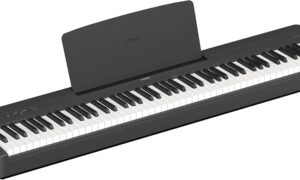When considering purchasing a used car, fuel efficiency is often one of the most important factors for many buyers. Among the many options available, Mazda cars for sale stand out as an attractive choice due to their reputation for performance and efficiency. While new models are often praised for their eco-friendly fuel efficiency, 5-year-old Mazda models continue to provide excellent fuel economy, offering great value for those looking for a used vehicle with long-term savings at the pump.
In this article, we’ll explore the fuel efficiency of 5-year-old Mazda models, highlighting how these vehicles manage fuel consumption and why they remain a wise choice for buyers looking to balance performance with economy. From the technology behind their fuel-efficient engines to real-world performance data, we’ll take a close look at how these vehicles continue to impress even years after their initial release.
The Importance of Fuel Efficiency in Used Cars
Fuel efficiency has become a top priority for many car buyers, particularly in the used car market, where consumers are looking for vehicles that offer low maintenance costs and great savings over time. With rising fuel prices and a growing concern for the environment, purchasing a vehicle with excellent gas mileage can be a key factor in making a smart financial decision.
When considering a 5-year-old Mazda model, it’s important to assess both the initial fuel efficiency ratings and how they hold up over time. While new vehicles often come with the latest technology for maximizing efficiency, older models can still provide a surprising level of savings, especially if well-maintained. Understanding how a 5-year-old Mazda performs in terms of fuel economy will help buyers make informed choices and avoid costly surprises down the road.
Mazda’s Commitment to Fuel Efficiency
Mazda has long been committed to improving fuel efficiency across its entire lineup of vehicles. Their approach to achieving better fuel economy is rooted in both engineering and technology. The brand is known for incorporating lightweight designs, aerodynamics, and innovative engine technologies into their vehicles, all of which contribute to their fuel-efficient performance.
Mazda’s Skyactiv Technology plays a major role in their fuel-efficient models. Introduced in 2011, Skyactiv is an integrated suite of technologies that includes more efficient engines, transmissions, and lightweight vehicle designs. For 5-year-old Mazda models, the presence of Skyactiv technology means that these vehicles were already built with an eye toward performance and fuel economy, ensuring that even as they age, their efficiency remains impressive.
Fuel Efficiency Ratings of 5-Year-Old Mazda Models
The fuel efficiency of a 5-year-old Mazda model will vary based on the specific make and model, but Mazda has made significant strides in fuel economy in recent years. Let’s look at a few key examples:
- Mazda3: The Mazda3 is one of the most popular compact cars in Mazda’s lineup and has always been known for its fuel efficiency. A 5-year-old Mazda3 (around the 2018 model year) equipped with the Skyactiv-G 2.0L 4-cylinder engine offers an impressive 28 mpg in the city and 37 mpg on the highway, depending on the specific trim and driving conditions. These numbers make it an excellent choice for daily commuting and long road trips alike.
- Mazda CX-5: The compact SUV segment is another area where Mazda excels in fuel efficiency. A 2018 Mazda CX-5 with the Skyactiv-G 2.5L engine delivers 25 mpg in the city and 31 mpg on the highway, making it a great option for those who want the versatility of an SUV without compromising on fuel economy.
- Mazda6: For buyers looking for a midsize sedan, the Mazda6 offers a perfect blend of performance and efficiency. A 2018 Mazda6 with the 2.5L Skyactiv-G engine provides 26 mpg in the city and 35 mpg on the highway, demonstrating the brand’s ability to maintain high fuel efficiency even in larger vehicles.
When comparing these models to others in their respective segments, it’s clear that Mazda cars have remained competitive in terms of fuel economy. Even five years after their release, these vehicles continue to provide impressive fuel efficiency for used car buyers.
Factors That Affect Fuel Efficiency Over Time
While 5-year-old Mazda models are built with efficiency in mind, it’s important to consider that fuel economy can degrade over time due to a variety of factors. Regular maintenance and driving habits play a key role in how well a used car retains its fuel efficiency.
- Engine Health: Over time, a vehicle’s engine can lose some of its efficiency due to wear and tear. Regular oil changes, air filter replacements, and other routine maintenance tasks can help ensure that the engine continues to run smoothly and efficiently.
- Tire Maintenance: Underinflated tires can significantly reduce fuel efficiency. Ensuring that the tires on a 5-year-old Mazda are properly inflated can make a noticeable difference in fuel economy.
- Driving Habits: Aggressive driving, such as rapid acceleration and hard braking, can lower fuel efficiency. Those who drive in a calm and controlled manner, avoiding frequent stops and starts, will generally see better mileage than those who drive aggressively.
- Load and Aerodynamics: The weight of the vehicle and the drag created by roof racks, trailers, or other attachments can reduce fuel efficiency. Removing unnecessary weight and reducing drag can help maintain the vehicle’s original fuel economy.
While a 5-year-old Mazda model may experience a slight decrease in fuel efficiency compared to its original ratings, keeping up with regular maintenance and practicing good driving habits will go a long way in maintaining its efficiency.
Real-World Fuel Economy: What to Expect
The official EPA fuel efficiency ratings are a great starting point when evaluating the fuel economy of a 5-year-old Mazda model, but real-world performance can vary based on driving conditions. Factors such as climate, driving style, and even the terrain can influence how much fuel you use.
For example, someone who drives primarily in urban areas with frequent stop-and-go traffic may experience lower fuel economy than someone who drives mostly on highways. Similarly, those living in colder climates may experience a slight drop in efficiency during the winter months when using the car’s heater more often.
That said, many Mazda owners report achieving fuel efficiency close to the EPA ratings, especially when they follow regular maintenance schedules. For instance, owners of a 2018 Mazda3 often report highway fuel economy close to 37 mpg, while city driving can result in mileage closer to 28 mpg, depending on their driving habits.
Benefits of Choosing Fuel-Efficient Mazda Models
Opting for a 5-year-old Mazda model with great fuel economy offers numerous benefits, particularly in today’s world where gas prices fluctuate and environmental concerns are at the forefront. The key benefits include:
- Long-Term Savings: A fuel-efficient car reduces the amount spent on fuel, which can add up significantly over time.
- Reduced Environmental Impact: Mazda’s fuel-efficient cars help reduce emissions, contributing to a cleaner environment.
- Better Resale Value: Fuel-efficient cars often retain their value better than less efficient models, as fuel economy continues to be a major selling point in the used car market.
For those interested in both saving money and reducing their carbon footprint, a 5-year-old Mazda with great fuel efficiency is an excellent option.
Conclusion
Fuel efficiency remains one of the most important factors for car buyers, even for models that are five years old. Whether you’re considering a Mazda3, Mazda CX-5, or Mazda6, the combination of Skyactiv technology and lightweight design ensures that these vehicles continue to deliver great fuel economy, even after several years of use.
With proper maintenance and care, a 5-year-old Mazda model can continue to perform well and provide the kind of fuel efficiency that helps buyers save money over the long term. By understanding the factors that influence fuel economy, including driving habits and maintenance, buyers can make informed decisions and enjoy the benefits of a fuel-efficient vehicle for years to come.































